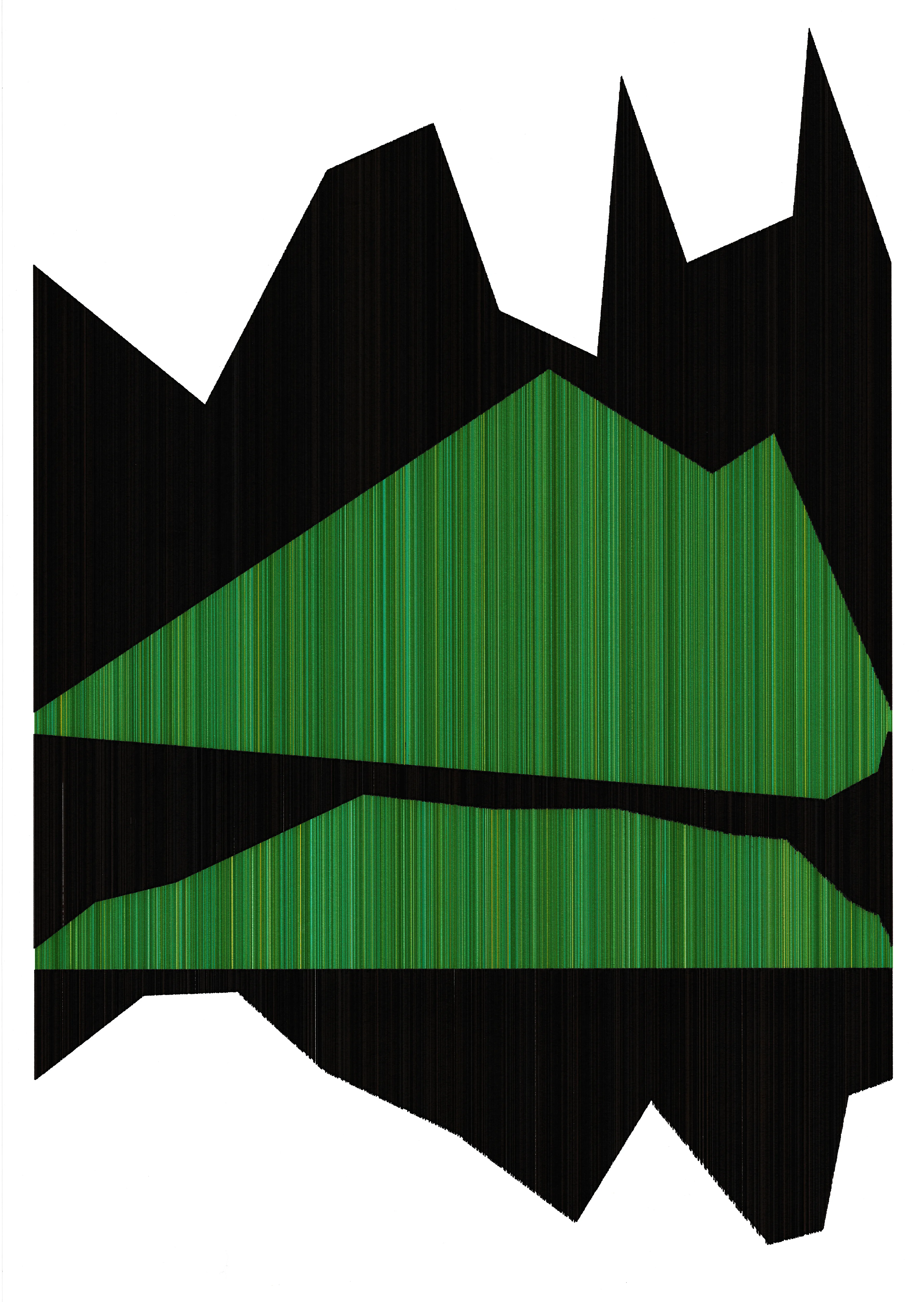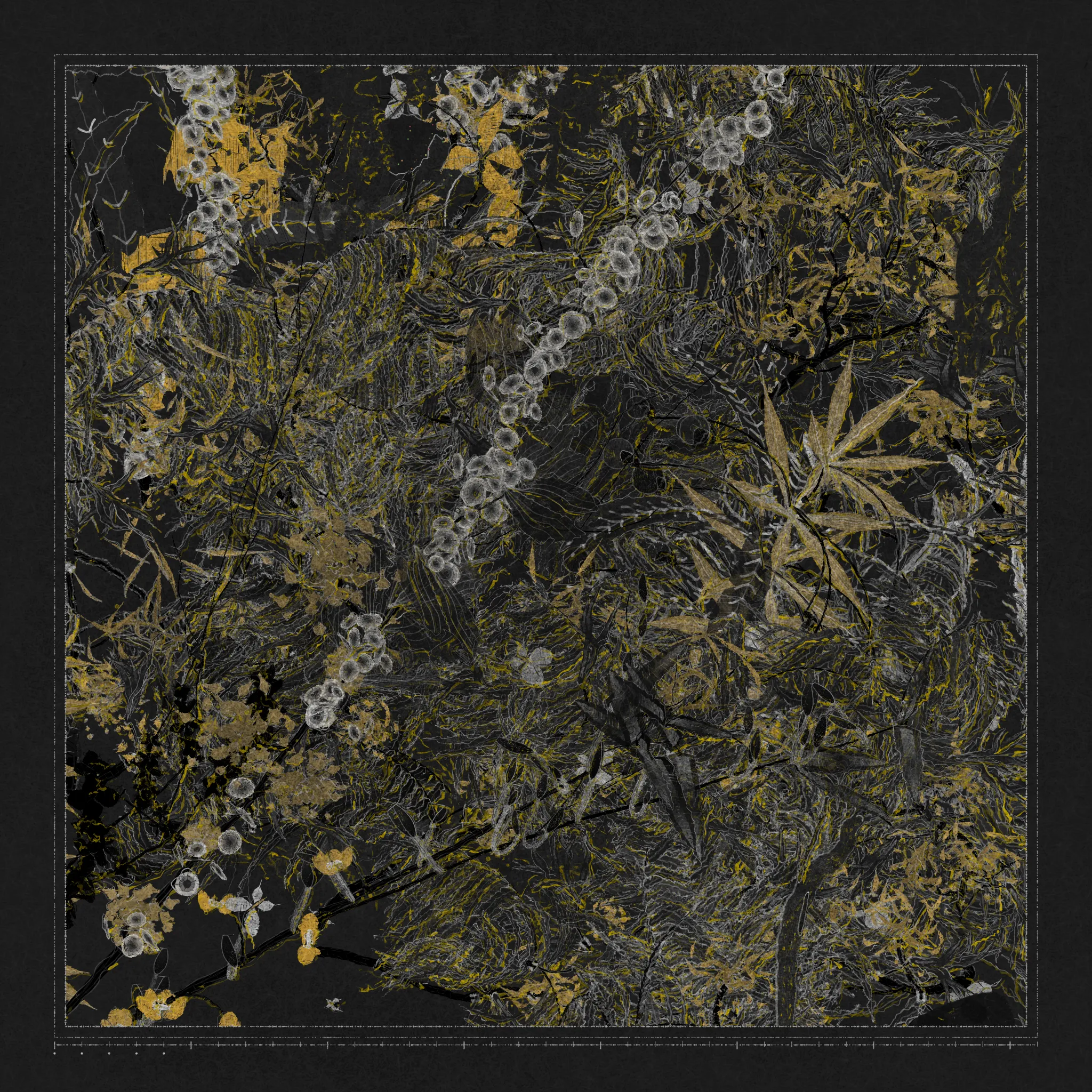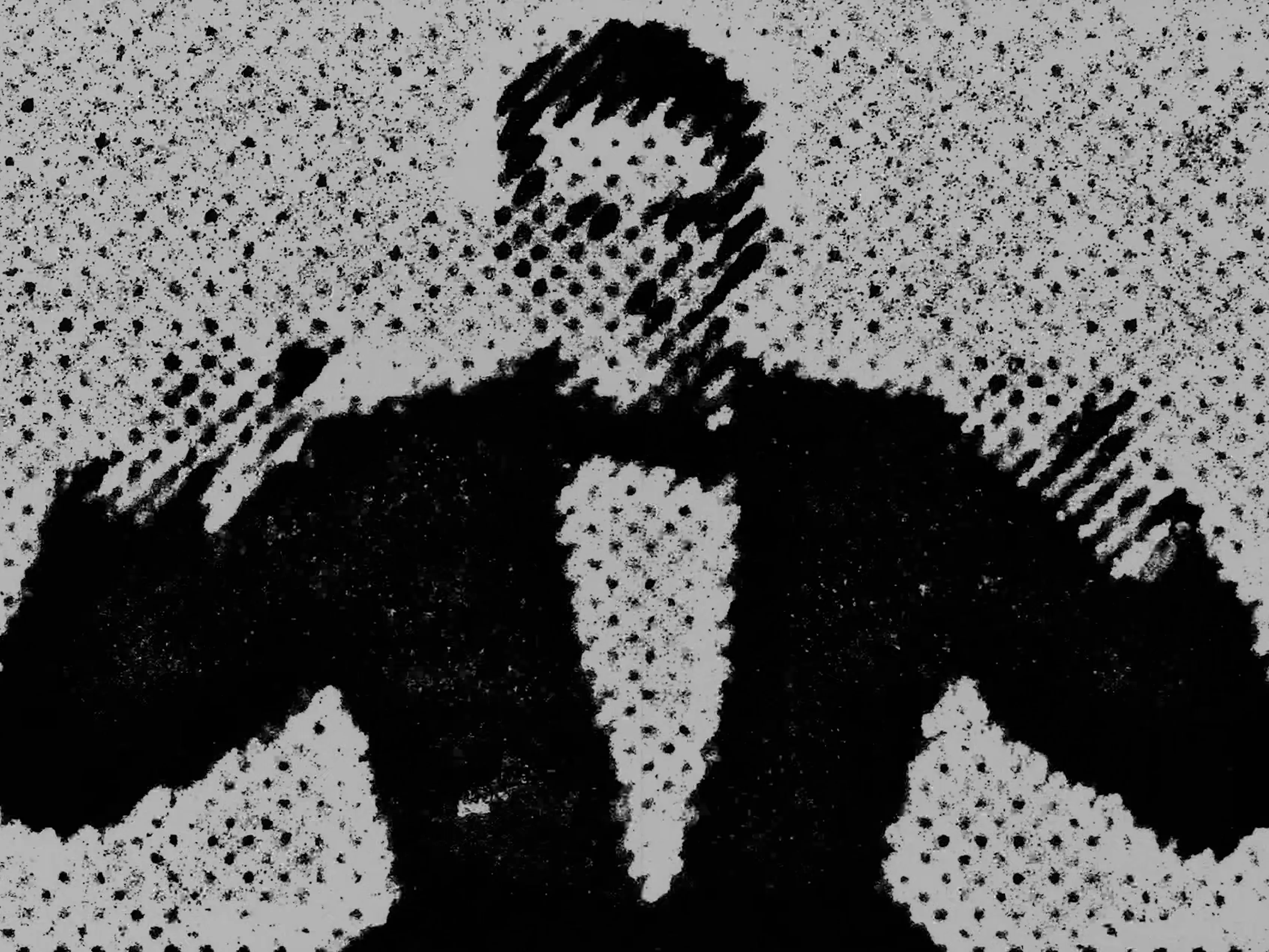Subscribe to get the latest on artists, exhibitions and more.
Turn The Plotters On: Mimi Nguyen on Marcel Schwittlick's 'Composition no.94'
One of the joys of working with creatives is encountering surprising and simple metaphors from artists whose practice seem all too ingrained. At any given moment, for a specific ‘x’ there can be only one ‘y’, as in life one’s position seems not possible to yield two locations at once.
The newest body of work that Schwittlick presents at the Galerie Met in Berlin embodies a dialectic of complexity and play. For him, the series is a “research into an inversion of my process, of using recorded cursor data as a fundament for my work.” Schwittlick has a gift for sumptuous visual spectacle underpinned by meticulous preparation. His latest body of work in his portfolio is based on a ten-year long collection of his cursor mappings, driven by his exploration and conviction that such personal data can unapologetically become the input to the generative code, “for example by approximating a cursor line with a mathematical function”, he recalls.

Mathematics is the root of most generative art, and not surprisingly its pioneers including Georg Nees and Frieder Nake were trained mathematicians. Although generative art is commonly assumed to be stochastic, a choreographic precision and uninhibited mathematical order are at the core of each algorithm.
Schwittlick has never been orthodox in his approach. As the former graduate of Computer Science at the HTW in Berlin, he took on an artistic training at my alma mater University of the Arts in Berlin. A day with Schwittlick might begin with a long bike ride to his studio in Schöneweide, a hidden place with a river view, filled with every historical book about generative art, including the first doctoral work on it or (now) archival first issues of HOLO Magazine with early interviews of the late Vera Molnar. Every artist confronts his past, and, in the case of Schwittlick, that past is both the practice and generative art legacy.

Composition no.94, started in 2023, is inspired by abstract shapes found in Vera Molnar’s 8 carriages. Schwittlick’s series seems to conjure the avant-garde geometrical compositions, a graphical analogue of the visual culture that can be glimpsed in Molnar’s recent Centre Pompidou’s solo show or at the hidden archives of the V&A Museum in London. He admits: “Vera Molnar's oeuvre has been a touchstone in my artistic evolution, seamlessly weaving into my style and perception, often beyond my conscious choice. Her enduring presence in the generative art world has not only shaped the genre but also profoundly influenced my approach. I am particularly attuned to her minimalist exploration of form, especially her nuanced use of lines. The understated transformations and the almost imperceptible shifts in her work have fascinated me from my earliest acquaintance with her art.”

The association of geometric shapes and simplicity of plotter lines go beyond an accident of digital practice. Schwittlick makes no claims, he says, about the evident reference: “I view this as an homage to hers, where I infuse my distinct perspective by incorporating dynamic lines as a core element, thereby delving into the interplay between digital possibilities and bodily movement. This approach is not so much an attempt to replicate her methods but rather a respectful nod to her legacy, as I explore new frontiers within the framework she has inspired.”
Marcel Schwittlick, Composition #94, 2024 (process). Image courtesy of the artist.
The works stunt with visceral colours, prehensile lines, and the most insinuating pen lines of any modern generative artists, all indirectly nourished by his passionate reverence for Vera Molnar’s legacy. “Her methodical explorations, characterized by simplicity and subtle variation, continue to be a wellspring of inspiration. It's evident that elements of her pioneering work have found echoes in my recent series.”
There’s nothing contrived about the points or lines here, which feel like logical yet serendipitous discoveries about these pen plotter movements. Simplicity is hard work, and each Schwittlick machine’s drawing takes anywhere between four to eight hours of constant mechanical labour of a pen plotter. He lends winsome unpredictability to the whole practice of pen plotting. At the beginning, eruptive full-ensemble lines give way to a gently pouring vintage pen inks and to snappy rhythms of the mechanical pen plotter. They incipient grooves are almost immediately waylaid by fresh lines.
The "functional" property of a polyline in a mathematical or geometrical context refers to a condition where, for any given value of x within the polyline's domain, there is exactly one corresponding value of y. This means that at any x-position along the horizontal axis, the polyline does not intersect itself vertically, ensuring that there's only one y value for each x. Such a polyline behaves similarly to a mathematical function in this aspect, where each input (or x value) maps to a single output (or y value).

A Vertical Line Test sounds as enclosed and mysterious as a mathematical quest, though a common use of it is simple regression modelling, one of the most popular tool for trend or statistical modeling that can provide insight into the relationships between variables. Functional line tests come in several mathematical varieties: Piecewise Linear Functions, Polynomial Interpolation, Spline Interpolation, Least Squares Approximation, Regression Analysis. For data that exhibit a specific trend or pattern, various regression techniques (linear regression, polynomial regression, logistic regression, etc.) can be used to find an approximate mathematical function.
Schwittlick explains: In practice, this means the polyline can be composed of multiple straight line segments connected end to end, but none of these segments can overlap vertically when projected onto the x-axis. This ensures the polyline passes the "vertical line test," a visual check used to determine if a curve represents a function. If you can draw a vertical line at any position along the x-axis and it only intersects the polyline at one point, then the polyline satisfies the functional property.
Perhaps our fascination with the physicality of pen plotter drawings is more about imagining our own constraints. It’s only in a final output of calculated theatricality that these pen plotter-based lines are, after all, not just a work of fictional algorithmic output but a decade long record of Schwittlick’s computer mouse movements. Here, they reveal the greatest fear that everyday thoughts pose to us, not the reasoned belief that they don’t exist twice in parallel, but the mythologising certainty that there is only one ‘y’ for a given ‘x’.
Mimi Nguyen
Mimi is a Creative Director at verse. She is a assistant professor at Central Saint Martins, University of Arts London where she leads the CSM NFT Lab. Her background is New Media Art, having previously studied at the Berlin University of the Arts (UdK) and Academy of Fine Arts in Warsaw. She now also teaches at Imperial College London, Faculty of Engineering, where she leads Mana Lab - a “Future...
Galerie Met
Galerie Met was founded in 2023 in Berlin and represents emerging and established artists of various generations, origins, cultural backgrounds, and sexual orientations. Its program focuses on radical, interdisciplinary, concept-oriented work, especially in the fields of interactive art, video art, installation art, generative art, as well as painting, photography, and sculpture that push...
Marcel Schwittlick
Marcel Schwittlick is an artist living and working in Berlin, Germany. His work examines the cybernetic aspects of generative systems. Marcel Schwittlick works with multiple media, including digital material, interactive installations, generative poetry, and conceptual video.
He studied Computer Science and Computational Art at the University of Arts, Berlin.


